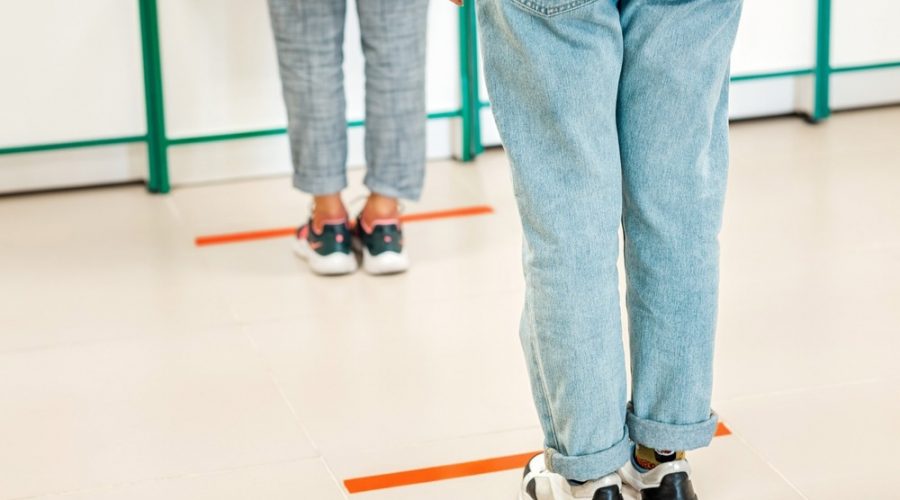The temporal dynamics of variables related to compliance with behavioral measures during the COVID-19 pandemic
In a recent study published in the British Journal of Social Psychology, researchers assessed the alterations in compliance with behavioral measures overtime during the coronavirus disease 2019 (COVID-19) pandemic.

Background
Since vaccines were unavailable during the early stages of a pandemic, compliance with behavioral strategies like social withdrawal and isolation is frequently seen as crucial to halting viral transmission. Most people reported following behavioral measures, although there is still a lot of scope for improvement. To increase society's capacity to comprehend, forecast, and promote compliance during epidemic outbreaks, more knowledge of the factors that influence compliance is thus necessary.
About the study
In the present study, researchers examined the temporal dynamics of factors related to compliance with behavioral measures during the COVID-19 pandemic.
A Dutch online survey was used to acquire the data for the present longitudinal study. Constructions critical for the study were determined before creating a survey containing items based on these components. Wave 1, which included every participant who finished the first survey, provided the largest and most diversified sample for analysis for node creation. The construction of psychological variables as nodes via either predetermined item combinations or the outcomes of a reduction approach was performed to identify data components.
To provide a self-reported compliance indicator, the team examined the extent to which participants adopted protective behaviors recommended to the general public (such as physical distance and hygiene practices). Due to changes in suggested preventative measures, the items constituting this node varied throughout the study. The multi-component model of attitudes, which included cognitive, affective, and behavioral elements, was followed in measuring attitudes. Items for the psychological COVID-19 networks' cognitive attitudinal nodes, such as risk perception, health risk, and economic consequences, were derived from earlier studies.
Two items on judgments of the possibility and seriousness of contracting the coronavirus were used to gauge risk perception. The result of these two components was risk perception. Health Risk denotes potential health effects resulting from an infection and the node. Self-exempting Beliefs delved into the conviction that one was immune to coronavirus infection. The nodes Negative Affect and Compassion were created as a result of items evaluating pandemic-related effects. Two nodes were also produced by worries-related items: Worries Virus and Worries Actions, which express worries about pandemic events caused directly by the coronavirus and events brought on by measures adopted as a result of the virus, respectively.
Results
The study findings highlighted contemporaneous effects that showed which nodes predicted other nodes within the same survey of a wave, whereas temporal effects showed which nodes predicted other nodes across a period of two to three weeks. In the temporal COVID-19 network, the most reliable nodes were Healthy Lifestyle, Measures Support, Compliance, and Vaccination Intention.
After adjusting for the impacts of every other node in the network, the results for nodes associated with compliance revealed bidirectional associations between Compliance and numerous other variables in the network. Measures of involvement, support, social norm, vaccination intention, and worries virus all predicted compliance. Additionally, compliance affected social norms, measures of support, involvement, a virus of worries, and intention to get vaccinated.
The Compliance nodes showed that changes in behavioral measure compliance were predicted by one's level of support for the behavioral measures, mental involvement in the COVID-19 pandemic, perception of social norms related to compliance, intention to get the COVID-19 vaccine, and level of anxiety related to the virus. The Worries nodes showed that a person's perceived social norms related to compliance, support for the behavioral measures, mental involvement in the pandemic, worries due to the virus, and intention to get immunized against COVID-19 were all predictive of a person's change in compliance with behavioral measures.
The relationship between Depressive Complaints, Anxiety Complaints, and Loneliness was discovered to represent another intriguing pattern in the temporal network. Anxiety complaints and loneliness were predicted by depressive complaints, whereas depressive complaints were predicted by anxiety complaints and loneliness. However, the differences between loneliness and anxiety complaints were not very significant. This trend implied that Depressive Complaints played a significant role in affecting Anxiety Complaints and Loneliness.
Results regarding edges connected to Compliance are equivalent to the temporal level. Notably, Measures Support, Social Norm, and Involvement had the strongest edges with Compliance. These edges suggested that people are more likely to support policies, adherence to social norms, and involvement in the pandemic when they report compliance. This implies that behavioral compliance dynamics are similar between measurements estimated over time and within measurements, together with the impacts in the temporal network.
Conclusion
Overall, the study findings demonstrated the added benefit of using a complex approach to compliance in pandemic-related situations. Additionally, the chosen approach in the present study offered insight into the unique relationships among a large number of factors, as well as how these relationships change over time.
-
Chambon, M., Dalege, J., Borsboom, D., Waldorp, L. J., van der Maas, H. L. J., & van Harreveld, F. (2022).
How compliance with behavioural measures during the initial phase of a pandemic develops over time: A longitudinal COVID-19 study.
British Journal of Social Psychology, 00, 1– 20. doi: https://doi.org/10.1111/bjso.12572
https://bpspsychub.onlinelibrary.wiley.com/doi/10.1111/bjso.12572
Posted in: Medical Science News | Medical Research News | Disease/Infection News
Tags: Anxiety, Coronavirus, Coronavirus Disease COVID-19, covid-19, Healthy Lifestyle, Hygiene, Pandemic, Psychology, Research, Vaccine, Virus

Written by
Bhavana Kunkalikar
Bhavana Kunkalikar is a medical writer based in Goa, India. Her academic background is in Pharmaceutical sciences and she holds a Bachelor's degree in Pharmacy. Her educational background allowed her to foster an interest in anatomical and physiological sciences. Her college project work based on ‘The manifestations and causes of sickle cell anemia’ formed the stepping stone to a life-long fascination with human pathophysiology.
Source: Read Full Article
